The Oriental Short Short-Clawed Ot is an amazing animal that may be seen in East Asia, but no one has ever seen one in the wild. They might be found near bodies of water such as streams and rivers, where they hunt for fish.
The otter catches fish with its claw and brings them up onto the shore. It mates from December to March. Sadly, their population is declining because of pollution and habitat loss which may lead to extinction in the near future.
Oriental short-clawed otters like to eat crabs, shrimp, clams and mussels. They also like some birds and some rodents as well as other things. They are predators in South East Asia that hunt in packs sometimes too.
- Status: Vulnerable
- Known as: Oriental short-clawed otter, Oriental small-clawed otter, Asian small-clawed otter.
- Estimated numbers left in the wild: Unknown.
Description

The Oriental short-clawed otter is tiny, the smallest of the world’s thirteen species. An adult weighs only 1 to 5 kilograms and measures 40 and 70 centimeters long, plus a 30-centimeter tail.
They are sleek and flexible like all otters and are covered in fur, dark grey above and whites below. Their toes are only slightly webbed for swimming, and their claws are small and blunt.
Oriental short-clawed otters eat a wide range of invertebrates and small vertebrates and prowl their wetland homes searching for this prey. They perform a valuable ecological service to rice farmers by entering paddy fields and consuming crabs there.
Though freshwater crabs are one of their staple prey items and mudskippers, they also catch (using their paws) and consume other crustaceans, plus clams, frogs, small fish, rodents, and snakes.
Their sensitive whiskers can detect the movements of prey animals in muddy water, enabling the otters to pounce and consume the small animals.
These otters are a highly gregarious species, living in groups of up to a dozen related animals. They are quite territorial and defend their area of wetland from intrusion by other groups of otters.
However, many confrontations are prevented by territorial markers, including heaps of dung or “spraint” that are also marked with fluids from special scent glands and simple cairns of pebbles and mud scratched up near the boundaries of their home range.
Young otters are born after a gestation period of around two months, and Oriental short-clawed otters have a potential maximum lifespan of around two decades.
However, most live 10 to 15 years in the rough, dangerous conditions found in the wild.
See Related: Endangered Species in California
Location
The oriental short-clawed otter is found throughout many countries of Southeast Asia, including the Philippines, Thailand, Vietnam, Bangladesh, Myanmar, India, Taiwan, Laos, Malaysia, Borneo, and parts of southern China. This tiny otter prefers freshwater wetlands and mangrove swamps as its main habitat in all parts of its range.
Oriental Short-Clawed Otter
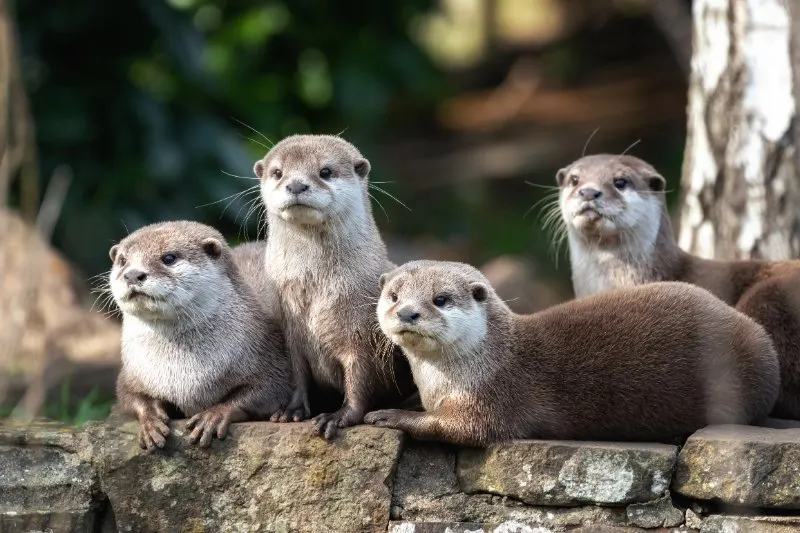
The Oriental Short-Clawed Otter is a lovely creature that can be found in East Asia, but no one has ever seen one in person because it is so uncommon. They dwell near freshwater rivers and streams, where they hunt for fish with their claws.
It uses its claws to capture the fish and bring them back onto the beach for eating. The Chinese golden hamster is a medium-sized rodent with a distinctive coat. It has moderate energy and can work for extended periods of time without tiring out.
The average life span of the species is 2 years, although some have lived as long as 4 years in captivity.
Oriental Short-Clawed Otter facts
The Oriental Short-Clawed Otter has 5 digits on its front paws and 4 digits on their back feet. They have sharp claws which they use to catch fish, crabs, shrimp, clams and snails. They are found near freshwater rivers or streams in East Asia. Sadly, the Oriental Short-Clawed Otter is an endangered species with a decreasing population.
Oriental Short-Clawed Otters reproduction
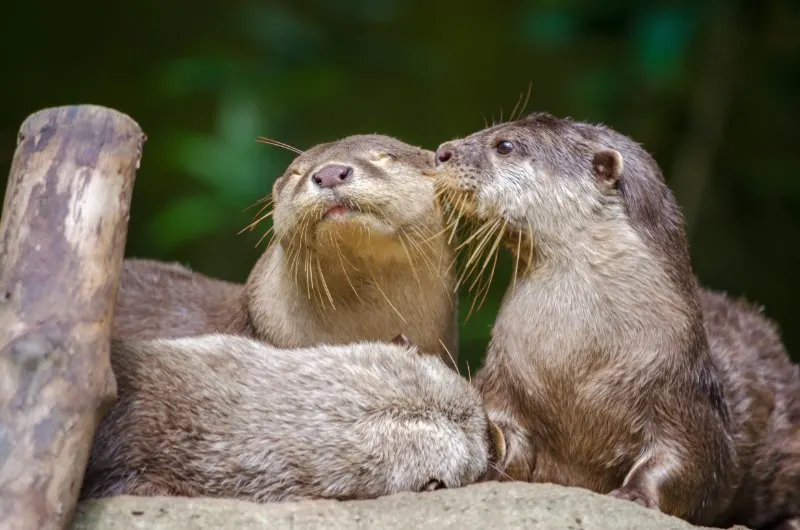
Oriental Short-Clawed Otters mate during December to March, and often choose to cohabitate with the same partner. They give birth to 1 pup per mating season. This species is capable of breeding at one year of age, but these pups will not be independent until age 2.
Oriental Short-Clawed Otter habitat
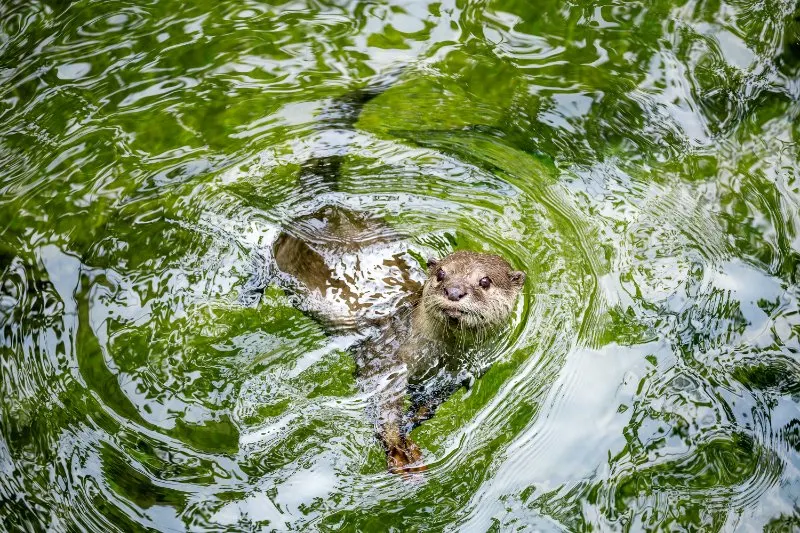
Oriental Short-Clawed Otters live near freshwater rivers and streams where they catch fish with their claws. They require a diverse habitat with a complex of interconnecting burrows and passages, in order to provide protection from predators.
These creatures need the water in order to survive, but they do not live in it full time because they lack special adaptations for an aquatic environment.
Oriental short-clawed otters are endangered
The Oriental short-clawed otter is threatened by poachers who supply its fur and individuals who destroy its habitats. India is in critical danger. Deforestation, natural habitat conversion for coffee and tea plantations, overfishing of rivers, and water pollution from pesticides are all significant issues.
The most sought after otter species for the illegal pet trade in Asia is the Oriental short-clawed otter. In 2016 and 2017, 280 people from Indonesia, Thailand, Malaysia and Vietnam offered 711 of these animals for sale through online websites.
In the time from December 2015 until October 2018, 49 Oriental short-clawed otters were taken from wildlife traffickers. 35 of them were going to be sold in Japan.
See Related: Environmental Organizations in India
Conservation
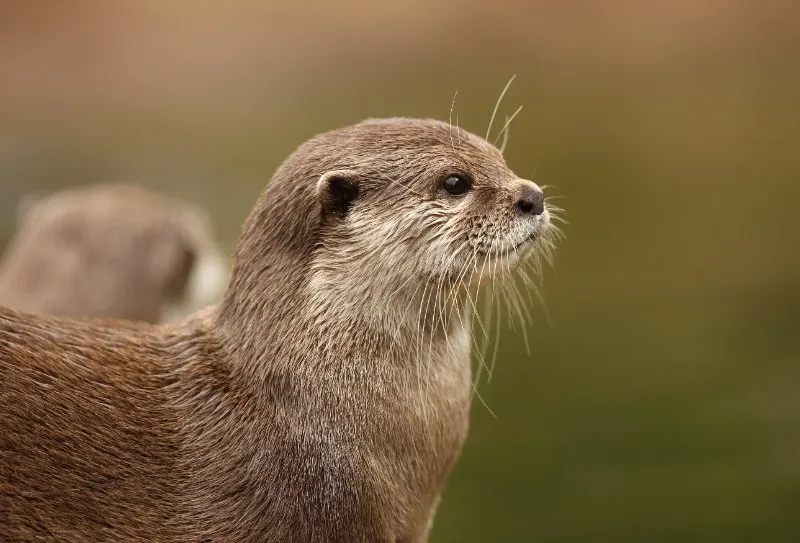
Threats
The biggest threat facing the oriental short-clawed otter today is habitat destruction as humans continue to encroach into and drain the wetlands that these small animals need to survive.
As usual, habitat fragmentation will eventually raise the risk of inbreeding and thus less overall genetic vigor and breeding success.
Oriental short-clawed otters have also been hunted for their pelts, dense and have a velvety texture in common with all otter species; however, hunting is not the chief cause of the species’ dwindling numbers.
See Related: Endangered Species in Oklahoma
Conservation efforts
The Oriental short-clawed otter is protected from hunting by international treaty, but conservation efforts for the species are fragmentary and poorly coordinated. Much more conservation work is needed.
Several zoos, including Sea World in the United States and the Basel Zoo, are attempting to breed captive populations of these animals to help with future reintroduction efforts or keep some of the animals alive.
See Related: Fascinating Facts About Conservation
Organizations
Do you know of or are you a part of an organization that works to conserve the Oriental short-clawed otter?
Then please contact us to have it featured on Our Endangered World.
Conclusion
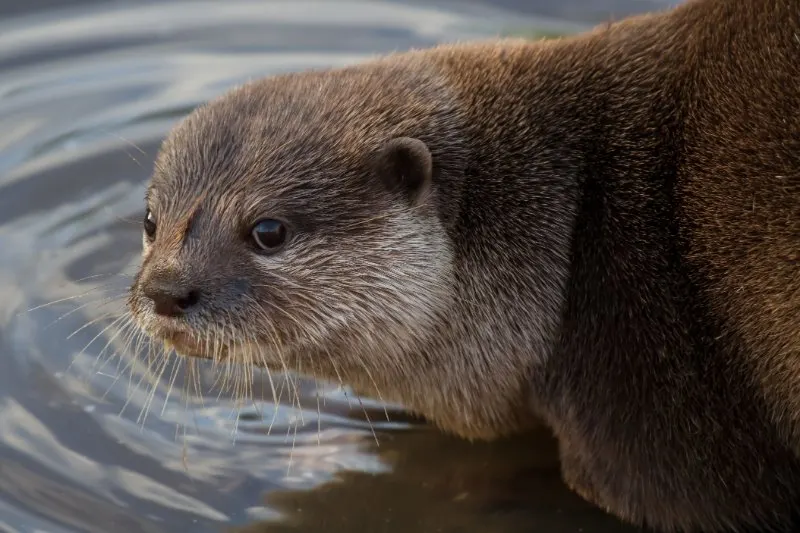
The Oriental Short-Clawed Otter is a beautiful animal that may be found in East Asia, but no one has ever seen one because it is so elusive. They live near fresh water rivers and streams, where they hunt for fish using their claws.
It captures the fish with its claws and then carries them back to the beach for consumption. It feeds on crustaceans like crabs, frogs, small fish, rodents, snakes or clams with their sensitive whiskers detecting prey movements in muddy water.
Gregarious, live in groups of 12 or more individuals that defend their territory against competition from other groups of otters by using territorial signals including heaps of dung (spraint) marked with fluids.
Short-clawed otters mate during December to March and can live up to two decades in the wild. Nonetheless, the majority of them survive 10 to 15 years in difficult, hazardous environments in the wild.
International treaty protects Oriental short-clawed otters from hunting, but conservation efforts for the species are piecemeal and poorly organized.
FAQ
Where do Oriental Short-Clawed Otters live?
The Oriental short-clawed otter is a species of otter that lives in southern India, China, and parts of Southeast Asia. After escaping from zoos and aquariums in Asia, the it has become established in England.
The Short-Clawed otter is a coastal species that prefers freshwater wetlands and mangrove swamps at lower elevations, but it becomes more visible in fast-flowing, rocky streams at higher altitudes.
What is the Oriental Short Clawed Otter diet?
The Oriental short-clawed otter is a meat eater that eats mollusks, fish, frogs, crabs, and other crustaceans. This feeding method is most often done on the beach or in shallow water, and it’s almost completely carried out with the front paws.
Dental formula is suited to a broad diet that includes shellfish. Canines are sharp and pointy, while molars are wide and robust.
How long does it take Oriental Short-Clawed male Otters to mate with female otters?
It is thought that Oriental Short-Clawed Otters mate throughout December and March. Two otters, the Oriental Short-Clawed Male and Female Otter, will share a territory and hunt for fish all day long before mating, strengthening their relationships before doing so.
How rare is the Oriental Short-Clawed Otter?
The Oriental short-clawed otter is one of the rarest species ever, with just four breeding pairs surviving at a wildlife refuge where a troupe of 20 once lived, and without human assistance it is unlikely to survive much longer. “This species will become extinct,” said Andrew Johnson of Wetlands International – Asia Pacific Programs. Farmers who want cashmere wool from the undercoat of the Oriental short-claw — and possibly a relative of North American river otters — capture it as accidental victims while trawling for shrimp or fish in coastal areas where rivers run near freshwater streams and rivers where they hunt for fish.
Is the Oriental Short-Clawed Otter endangered?
Unfortunately, these animals’ population is declining as a result of habitat loss and pollution, which might lead to their extinction in the near future. The Asian small-clawed otter and the smooth-coated otter have now been added to CITES’ list of animals with the greatest level of protection from the wildlife trade.
The Chinese small-clawed otter is a high-demand animal for both domestic pets and ‘otter cafés,’ where captive wild otters are forced to interact with paying visitors.
Conservationists believe that the trade ban was absolutely necessary for the two species’ survival, with their populations in the wild having decreased by at least 30% over the last 30 years.
The smooth-coated otter and the Oriental Short-Clawed Otter were added to the list of creatures with the highest level of protection from wildlife trafficking by parties to CITES
Other Species Profiles
